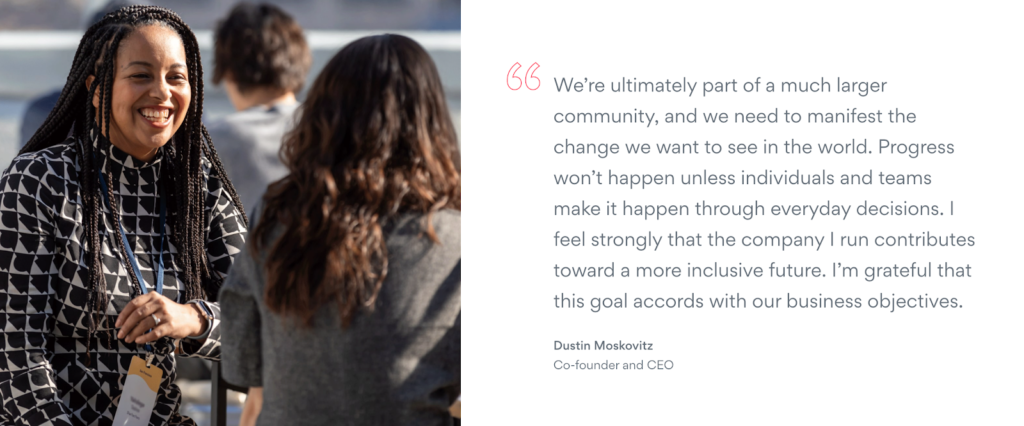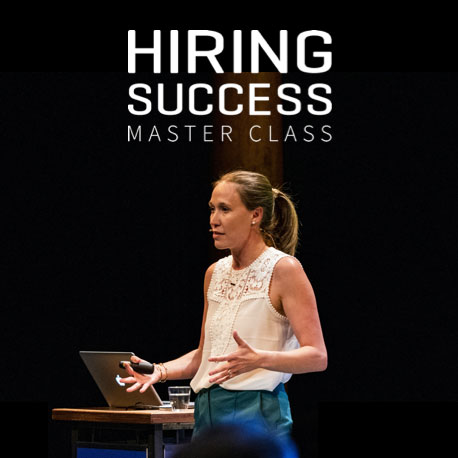This article is part of our focus on sharing how TA leaders can build a more inclusive recruiting process. To become an active participant, check out the Diversity Hiring page!
Learn the top D&I practices to promote gender equality in tech hiring for next-level talent acquisition management.
Table of contents:
- Why focus on D&I culture?
- Implementing D&I recruiting
- Promoting D&I recruitment techniques
- Businesses championing D&I recruitment
- 9 Questions to ask before launching a D&I strategy
- How can we promote gender equality in tech recruitment?
- Metrics to measure gender equality
Today, diversity and inclusion (D&I) sit—thankfully!—front and center in many hiring discussions taking place across the tech world. Unfortunately, this incredibly important dialogue all-too-often begins with ‘What can the recruiting team do to diversify my company?’—and this right here is the wrong place to start. Let me explain why.
Before we can devise and execute any D&I recruiting strategies, we need to make sure that we are actively building cultures that create environments where underrepresented groups feel they belong. Employees need to feel safe to speak up, contribute, take risks, and do great work with equal reward. Beyond that, people want and need to see these in practice around the workplace. Until we can say we have managed this with confidence, we can’t expect recruitment to diversify–it all begins with culture.
Sadly, gender inequality in tech is still very real, and one of the biggest barriers to break when building inclusive cultures. In 2018, female tech founders brought in just 2.2% of U.S. venture capital dollars, and only 1% of female tech entrepreneurs won corporate contracts to keep their businesses afloat.
Add to that, in new tech businesses only 20% of C-Suite leaders identify as female and only 3% as women of color. Specifically, in tech, female software engineers report making $8,559 less on average than their male counterparts.
These hard-hitting statistics illustrate the stark truth of the challenges still before us in talent acquisition management. However, using a D&Istrategy in recruiting can create a significant impact —we just need to address culture first while engaging and winning buy-in from business leaders. Once that’s accomplished, then we can turn to recruitment to build a company we can be proud of. To determine your starting point you’ll want to determine your net hiring score, similar to a net promoter score, to determine how well your hires fit into the company culture.
Why focus on D&I culture?
The truth is, I know that if I have a big problem to solve, I want people in the room who didn’t walk the same path I’ve walked. Why? Our products and our companies are better when we are diverse. A McKinsey study finds that companies with a diverse workforce are 35% more likely to outperform those without diversity initiatives.
What does implementing D&I recruiting mean?
Implementing a D&I recruitment strategy means taking a magnifying glass to every process, system, technology, resource, and structure within recruiting and making sure you’re creating a function and process that attracts, engages, and closes a pipeline of diverse backgrounds, experiences, and underrepresented groups. Overall, D&I recruiting is the recognition that we are better when we are diverse.
How can we promote D&I techniques in recruitment?
Before kicking off any new hiring search, it’s essential to challenge hiring teams on what they actually measure for success in interviews, to make sure they measure things that allow for diversity. When your team can look past a specific degree or industry, and expand their understanding of what makes someone successful in a role, then you can start to diversify.
Examples of businesses championing D&I recruitment
- Affirm: I have a huge #culturecrush on the work that Ragini Holloway is doing over at Affirm. They have done a great job holding up the mirror and really challenging the status quo when looking at a diversity of backgrounds and experiences to help diversity talent. Affirm has created ways for returning parents, who happen to be mostly women, and for veterans to enter the workforce. They are continually thinking outside the box and setting the standard of what companies should be doing.

- Asana: Asana is crushing it when it comes to D&I. Earlier this year, the company posted a D&I page on its website, and it’s fantastic. They are seeing great momentum from their D&I pillars of Build, Recruit, Thrive. Asana has put it out there for the world to see and have made it known that they are committed to creating safe cultures and environments where diverse of talent can thrive.

9 Questions your company needs to ask before launching a D&I strategy
- Is our organization genuinely bought into the desire to diversify our talent pools and get diversity candidates to the final stages?
- Are we willing to take the time necessary to invest in diversity hiring, even when the role needs to be filled immediately?
- Are we willing to diversify our team to reflect the diversity we want to see within the company?
- Are we willing to spend the money and time to invest in technologies and platforms that eliminate bias?
- Are we willing to completely break old processes to try new techniques and get better, more diverse talent into the organization?
- Are we willing to drop egos and admit that we don’t know everything when it comes to D&I?
- Are we willing to listen to feedback and acknowledge when we get it wrong?
- Are we willing to invest in recruiting processes that create genuinely inclusive and welcoming experiences for all genders, races, ethnicities, and backgrounds?
- Are leadership and managers ready to be held accountable to diversify talent?
How can we promote gender equality in tech recruitment?
Gender equality is only real when all people, regardless of gender, feel they have an equal opportunity to contribute, compete, and be compensated for the same roles and functions.
For there to truly be gender equality at work, all genders need to have the psychological safety that if they speak up, contribute, perform, and deliver that they will be deserving of and entitled to the same recognition and rewards as everyone else.
There are many ways that people choose to identify when it comes to gender, including non-binary. It’s essential to do the work internally to have the conversations and educate our leaders on the scope of gender and equality around all genders.
What type of metrics should a recruitment team set to measure gender equality?
- Sourcing/outreach: Quantitative metrics based on your talent attraction numbers can tell you how many women and gender diverse people you are including in outreach and how far those people make it your recruitment funnel.
- Candidate experience: Qualitative positive sentiment feedback. If you can capture different genders in your candidate experience survey, do it. What is the experience of women vs. men?
- Hiring: Quantitative numbers of the male to female ratio on people being hired and at what level across management positions.
See our 2019 Gender Bias Report Below.

Closing thoughts
We have to work on inclusion within our culture before we can master the recruiting side. If we want to tackle ingrained, dated, cultural injustices like gender inequality, we need to look at the broader picture of D&I.
For your D&I strategy to succeed, buy-in and commitment need to come from the top down, and your efforts need to be tracked and shared publicly within the company. Don’t be afraid to use technologies that help mitigate recruiting bias, and let data help break ingrained habits or bias.
The real answer, in my opinion, goes back to humanity. If we can listen to others, we can learn from others. That being said, we all make mistakes, so don’t be afraid to experiment and iterate until you get it right–this is an initiative yet to be perfected. Be humble and honest about where you are on your D&I journey. We are, after all, only human.
This article is part of our focus on sharing how TA leaders can build a more inclusive recruiting process. To become an active participant, check out the Diversity Hiring page!

 Enroll in the Master Class & earn 6 SHRM credits
Enroll in the Master Class & earn 6 SHRM credits